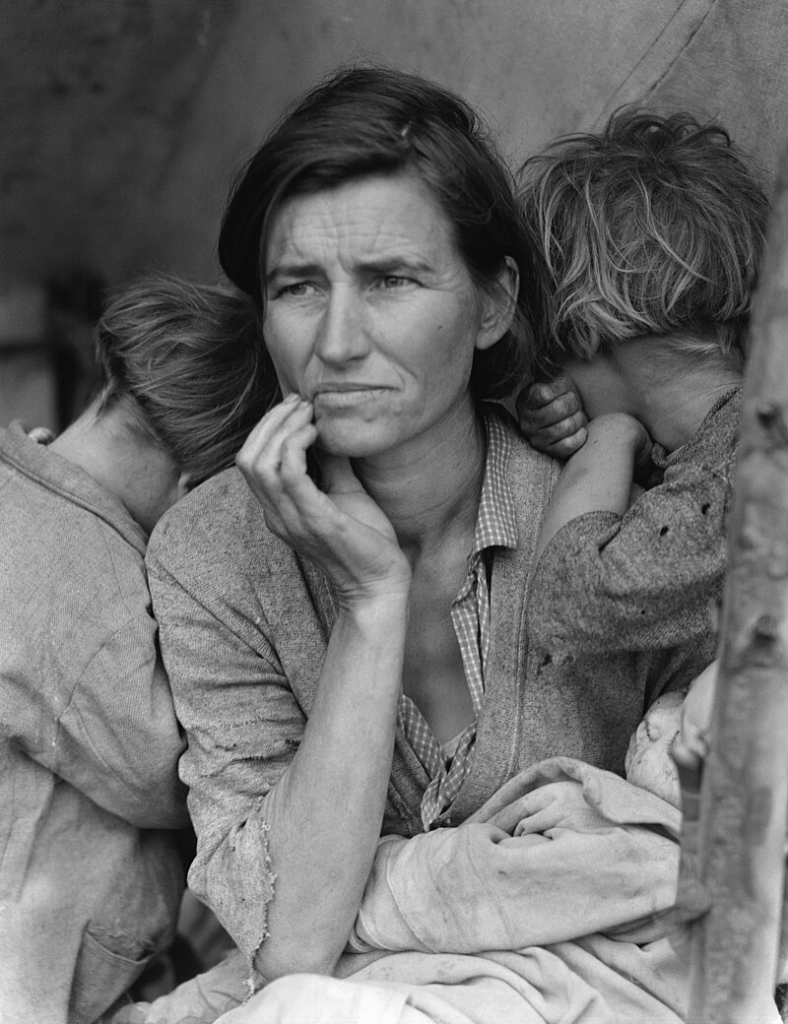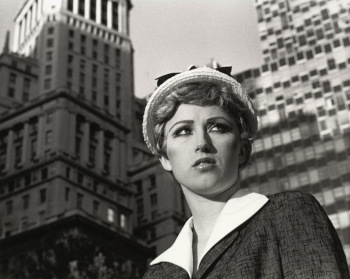Essay plan:
Introduction (250 words): Reflect on the origin of photography and describe in your own words the difference between the two photographic processes, Daguerreotype and Calotype. Consider how they could be viewed as either a mirror or a window of the world according to John Szarkowski’s thesis. Choose one quote from Szarkowski’s text and comment if you agree or disagree.
Paragraph 1 (250 words): Choose an image that in your view is a mirror and analyse how it is a subjective expression and staged approach to image-making. Choose one quote from Szarkowski’s thesis and another from Jed Pearl’s review which either supports of opposes Szarkowski’s original point of view. Make sure you comment to advance argumentation in providing a critical perspective.
Paragraph 2 (250 words): Choose an image that in your view is a window and analyse how it is an objective expression rooted in the notion of realism. Choose one quote from Szarkowski’s thesis and another from Jed Pearl’s review and follow similar procedure as above ie. two opposing points of view and commentary to provide a critical perspective.
Conclusion (250 words): Refer back to the essay question and write a conclusion where you summarise Szarkowski’s theory and Pearl’s review of his thesis. Describe differences and similarities between the two images above and their opposing concepts of objectivity and subjectivity, realism and romanticism, factual and fiction, public and private.
Szarkowski, J. (1960). Mirrors and Windows. New York: Museum Of Modern Art.
Essay:
The discovery of two key ideas marked the beginning of photography’s history. The first is camera obscura image protection. The second was realisation that exposure to light can change particular substances in observable ways. Before the 18th Century, no artefacts or documentation exist that suggest an effort to take pictures using light-sensitive materials. Joseph Nicephore Niepce and Louis Daguerre are considered the inventors of photography with cameras. the former started out experimenting with silver chloride and silver halide photography, but could not figure out how to prevent them from darkening when exposed to light. in 1826, Niepce succeeded in taking the first true camera photograph. He used a sheet of pewter coated with bitumen, which required an exposure time of at lest 8 hours. the subject of this photograph hit close to come home from Niecpe; the view from his workroom in Saint Loup-De-Varennas, France. Painter Louis Jaques Mande Daguerre decided to partner up with Niecpe. Daguerre continued to develop, refine and tinker with the process by using silver-plated copper sheets and mercury vapor. As he continued to develop this process, Daguerre was able vastly reduce the exposure time.
“Mirrors and Windows: American Photography Since 1960” was one of the most significant exhibitions that was seen. It was curated and introduced by John Szarkowski and featured 200 pieces by 100 American photographers. From 1962 to 1991, he oversaw photography at the Museum of Modern Art in New York. Szarkowski organised the show’s pictures into two categories. The purpose of “mirrors” was to reflect the photographer’s personal aesthetic. “Mirrors” is described as a photo captures a moment, a scene, or a subject in the real world, providing a glimpse into an external reality unrelated to the photographer’s thoughts. It provides insight into lives, environments, or events that are outside our direct experience. Through the metaphorical “window,” we can see the world in a way that might be impossible to experience first hand, whether it’s a place we will never visit or a fleeting moment that will never happen again. It was also photographs created to serve as a window through which the observer might see a largely accurate image that was not influenced by the photographer’s personal preferences. Remember that Szarkowski emphasised that this was not an open boundary.
Szarkowski said “I consider photography to be the art of the visible. It is an investigation of the outside world since it deals with the world as it seems to us. However, it also serves as a vehicle for the photographer’s own vision and a means of self-expression. Szarkowski’s claim highlights the dual nature of photography. He recognises that the medium can both serve as a “window” into the outside world, providing an unbiased, unvarnished depiction of reality, and reflect the world via the subjective perception of the photographer (the “mirror”). This dual function highlights the paradox at the core of photography, which is that it is both a documentation of the outside world and a personal, introspective act.
Jed Perl gives a critical response to Szarkowski’s concepts in his review, highlighting a conflict in photography between the universal and the particular. He writes, “Szarkowski’s notion of photography as a mirror to the self often falls short of acknowledging the way in which photographs, even at their most intimate, transcend individual expression and speak to broader truths about the human experience.” According to Perl’s assessment, images frequently transcend being a mere mirror of the photographer’s inner world, challenging Szarkowski’s dualism. Perl worries that Szarkowski’s emphasis on the “self”—the individual vision—can mask the larger, shared human experience. According to Perl, photography has the ability to discover universal truths even though it may start with a subjective point of view.
Szarkowski’s thoughts that photography is both a “window” and a “mirror” provides a convincing framework, but Perl’s criticism draws attention to a crucial omission: the possibility that images can convey a collective cultural or historical narrative in addition to the subjective experience of the individual photographer. Perl contends that pictures might go beyond Szarkowski’s emphasis on the photographer’s own vision to become a part of a larger conversation about the human condition. As a result, images may be viewed as bridges connecting universal and personal realities, rather than merely mirrors reflecting a person’s mind or windows reflecting the outside world. In this way, Perl advocates for a broader perspective that takes into consideration photography’s capacity to interact with broader, more global audiences, even as Szarkowski portrays the ambiguity and complexity of the medium. Implying that a photo can showcase someone’s personal perspective while also addressing common societal or historical truths. The conflict between the individual and the general may hold the answer to how photos can function as both reflections and portals to the world.

Dorothea Lange’s iconic photograph Migrant Mother (1936)
An influential instance of a photo acting as a “window” to reality is Dorothea Lange’s famous image Migrant Mother (1936). This photo, captured during the time of the Great Depression, has become a representation of the challenges faced by migrant laborers in the United States and is frequently referenced as a prime instance of documentary photography. Let’s examine how this photo acts as a portal to the outside world and mirrors an unbiased truth based on the concept of realism. Lange’s Migrant Mother shows Florence Owens Thompson, a poor migrant worker, with her kids crowded around her, gazing sideways or off in the distance. Thompson’s worn face displays the marks of difficulties, her eyes are faraway and reveal a blend of concern and resolute resilience. The kids, while not as easily seen, seem tinier and clustered together, emphasizing the family’s fragility. Acting as a “portal,” Lange’s image provides a clear look at a particular, difficult instance in the experiences of actual individuals. It offers a peek into the everyday life of migrant families in the Great Depression, as they dealt with severe poverty, displacement, and uncertainty. The picture portrays human suffering and strength in a candid and unidealized way, without staging or idealizing the subject. Dorothea Lange’s Migrant Mother demonstrates how a photograph can act as a “window” into the world, providing a raw glimpse into the reality of a particular moment in time and location. The picture depicts the hardships faced by migrant workers during the Great Depression in a realistic way, avoiding idealization or emotional manipulation. It focuses on the actual experiences of Florence Owens Thompson and her children, representing the broader societal situation. The photo provides a direct, factual glimpse into a key, albeit distressing, part of American history.

Cindy Sherman’s Untitled Film Still #21 (1978)
Cindy Sherman’s Untitled Film Still #21 (1978) can be seen as a reflection in a photograph. This image, similar to many of Sherman’s pieces, serves as a “reflection” of her personal journey in examining identity, gender, and self-formation. Using staged photography, Sherman allows the viewer to explore the intricate relationship between the artist’s personal expression and how societal norms influence our sense of self. Cindy Sherman is seen in Untitled Film Still #21 wearing a stylish, vintage attire while standing in a public area, such as a park or street corner. Her eyes are averted from the camera as she displays a gentle yet distant look, with her body language and the background suggesting a cinematic or storytelling environment, as if she is a character in a movie scene. The picture is intentionally arranged, capturing a moment that appears rehearsed and uncertain, hinting at a story but lacking a definite plot or conclusion. When we label this picture as a “mirror,” we are discussing how it mirrors Cindy Sherman’s personal investigation of identity and how people interact with societal and cultural roles. The photo enables Sherman to explore the concept of identity as a performance by showcasing her personal interpretation and connection to how we form our self-image based on societal expectations. Cindy Sherman’s Untitled Film Still #21 illustrates how a photo can serve as a reflection of the artist’s personal feelings. Through the use of staged elements, costumes, and performative identity, Sherman examines the societal expectations placed on women and contemplates the shifting, constructed aspect of self-identity. The photo encourages viewers to think about how identity is influenced by factors like media, culture, and gender norms, in addition to internal factors. Using a deliberate and planned method, Sherman employs photography to reflect on oneself and show how we all act out different roles in our lives.
In the end, photographs hold a special place between the subjective and objective, functioning as both mirrors and windows reflecting the world. Just like mirrors, they mirror the photographer’s inner thoughts, feelings, and perspective. Like windows, they provide a peek into the outside world, frequently seizing a moment of universal importance. Photography’s ability to operate on different levels, providing personal introspection as well as unbiased record-keeping of reality, stems from its dual nature.
